
Printing note: This design was created to be 8.5″ x 14″ and the design pdf will print best on legal size paper.
Wild Ones Meet the Designers Webinar
Lafayette Native Garden Design Discussion with Designer Dona Weifenbach

Designer Statement
In the past 20 years, Louisiana and the coastal zone of the Gulf of Mexico have experienced more frequent and stronger hurricanes and tropical storms than ever before. Rainfall events are often very fast and dump more rainfall than drainage systems can handle, causing widespread flooding. As housing developments move away from cities into the countryside, agricultural fields and woodlands are converted to subdivisions, strip malls, acres of shallow rooted lawns. Plants must tolerate temperatures between 90-100 degrees F with high humidity from May through September. Summers are often very dry until Hurricane season begins in August and extends until late October.
Because of these conditions, I chose to set my landscape design on a water body, a bayou. Water levels rise and fall in normal riverine ecosystems, and in Louisiana, rivers rise in response to floods in the northern part of the country as excess water drains down the Mississippi River and into its tributaries. With the addition of extreme rainfall which has become the norm, there is a need for a change in our approach to the function of our landscapes. Deep rooted native plants help absorb more water and slow runoff into flooded drainage canals.
My approach to natural landscape design begins as an analytical process resulting in a functional native plant ecosystem that fulfills the family or client’s needs. First assess the existing native plants that are thriving in the yard. Then define the physical conditions. What are the dimensions of the property? How are existing structures placed? What is the soil type, where does the sun rise and set, how well does the property drain? Now consider the views from in and around the home. A garden is a very personal space, a place to relax with family and friends, to recharge, to work, surrounded by nature. It should make you happy. I love the idea of “rooms” within a property to fulfill personal needs. A private space to birdwatch without disturbing the birds or a meditation garden. A special tree for kids to climb or an open area to toss a ball. Final plant selection also considers the types of pollinating insects, birds, and other wildlife the clients want to attract year round. People who garden with natives tend to understand the relationship between the plants and wildlife. One native garden in a neighborhood becomes a small part of a larger whole. It becomes part of a wildlife corridor, a food source and shelter for resident and migrating pollinators and birds. The opportunity for sharing seeds, plants, and information with neighbors becomes the opportunity to increase the size of the corridor, connecting habitats, one garden at a time.
Before Installation: Things to Know and Consider
Soils consist of sand, silt and clay in different proportions. The proportion of these elements affects consistency and drainage. This landscape is located on a bayou (large stream) and receives silt from periodic flooding with a heavy clay layer underneath. When you begin a landscape project, send a soil sample to your agricultural agent for testing for pH A pH of around 6.0 is preferred for most plants, but it can be slightly higher or lower without interfering with nutrient absorption. An annual layer of mulch on the beds greatly improves the texture.
Call your local utility companies to identify underground obstructions. This is a free service, they will spray paint electrical, gas, cable, and water lines in your yard.
Weed barriers: I don’t use weed barrier for the beds because I like to plant close enough for the natives to grow together and outcompete the weeds. I also encourage spreading seeds around the plant and allowing seedlings to fill in blank spaces. I do recommend cloth weed barrier for walkways whether covered in organic matter, gravel or limestone.
Weed Removal Choices
Method 1: skim off the grass and soil layer with a flat shovel. You will lose some topsoil, but remove the roots of weeds.
Method 2: mow close to ground, cover with cardboard, wet the cardboard, and cover with 6 inches of composted leaves, compost or fine mulch (without large chunks of bark). Let this sit for about 2 months. The cardboard will rot and you can mix the mulch into the soil.
Method 3: mow close to ground, lay clear plastic on top of the ground, secure the edges and leave in hot sun for a week or more in hot weather. It will bake the plants.
Method 4: spray with herbicide. Some people recommend spraying vinegar directly on the plant. This method may kill the foliage and not the roots.
Edging
Steel edging is a very clean look and is durable but is expensive in today’s market. Less expensive aluminum edging is available but not as durable. Small limbs from your local compost or tree service are attractive and they are a renewable, free resource that decomposes over time, adding organic matter to your soil. Keep a 2 inch, weed free, clean edge in front of the limbs.
Phase 1
Front Yard: Foundation Planting and Trees
Foundation planting bed preparation.
- Mark the edge of the bed with a hose or string as a guide.
- Remove all of the weeds in the area of the lawn designated as flower bed on the drawing.
- Lay 6 in of peat moss and fine mulch over the ground. Dig or till the ground to a depth of 1 ft and mix organic matter together with soil. This depth is adequate for plants in 1 gallon or 4 in containers.
- Rake this level, pulling material away from the structure and edges of the bed. Your bed will be slightly raised from soil level.
- Set out your plants. Stand back and make sure they are where you want them. Consider your views from windows, porches, and sitting areas.
- Plant at bed level.
- Mulch with pine straw and water well. I use pine straw because it meshes together and won’t blow away in high winds or float away in a flood. Leaves or pine bark will work.
- Install edging around beds.
- Set the trees out in the yard where you want them and dig hole twice the diameter of the pot. Backfill with soil mixed with peat moss and fine bark. Place crown of tree 2 in above soil level. Step around base to compact soil mix around roots. Plant Turk’s cap around base of existing red maple, buckeye and fringe tree and mulch well. Place limbs or edging around Turk’s cap. This prevents damage from weed-eater or mower. Stake if necessary and water deeply.
Back Yard and Privacy Hedge
Several notes on living next to a water body in coastal Louisiana.
Flooding: This design is located on a bayou hydrologically connected to the Gulf of Mexico. Water levels will rise and fall with rain and flooding events influenced by larger rivers to the north and from tropical storm events pushing water from the Gulf of Mexico north. The edges will flood seasonally. If you don’t live on a water body but live in an area that floods when we receive large amounts of rain in a short time, these plants are excellent choices for those conditions as well.
Salinity: The plants I selected are for freshwater ecosystems. If you live in a salt water or brackish ecosystem, you will choose different plants since high salinity damages or kills freshwater plants. Contact your local nurseries or your county/parish agricultural agent for plant choices.
Erosion: Erosion occurs from different forces. Wind driven waves in a large water body such as the Gulf of Mexico or a large lake or pond can cause the bank to erode. Boaters using a water body create wave driven erosion in rivers and lakes. Soils wash away from the shoreline into the water. When your vegetated property line was 100 feet from your house when you purchased it, and 10 years later, it is 90 feet from your house, you have a erosion problem. I do not recommend bulkheads because they create erosion adjacent to the ends of the bulkhead. I do recommend planting a variety of deep rooted native plants to hold the soil in place and provide habitat for wildlife.
Back to planting:
At higher elevations in the back yard, kill weeds as you did in the front yard. If your back yard border along the bayou is on a steep slope or on a low elevation that floods, you don’t want to use cardboard with bark since it will float away when water levels rise. Coconut fiber mat is a good option for planting on a water’s edge where erosion is actively occurring. Purchase a roll of coconut mat to cover the width of the property and the length of the sloped area. In this case, 70 ft by 10 ft. Cover the ground and pin it down. Place plants where you want them and cut a circle through the mat the size of the hole you want. Have a wheelbarrow of peat/bark mix close by to place soil from holes you dig. Mix this together and backfill once your plant is in the hole. Aquatic plants and grasses may be planted at ground level. They are adapted to flooding. Water well.
The privacy hedge may be treated as a bed or individual plants. Remove weeds, plant trees 2 in above soil line and remember to water well and mulch after planting.
Phase 2
Front Yard Bed Extension, Pollinator Garden and Path Creation
Paths: Choose your path treatment. I prefer bare ground covered with coarse shredded pine bark and then pine straw. This is easy to walk on barefoot, easy to roll a wheelbarrow, and comfortable to sit on. You can keep the grass if you don’t mind mowing and edging. Gravel or limestone is a good option as well, a harder surface, but attractive and functional. For all except lawn, kill the weeds, lay down a weed barrier, cover with material, rake level.
Pollinator bed: Treat weeds. Dig organic matter into bed. A small 1 ft path runs through the bed in an S shape to allow easy access for pruning, staking, cutting flowers, deadheading, and collecting seeds. If you have and HOA, there may be limits on the height of grasses. Plant accordingly. For instance, the Indian grass I recommend is a tall, lovely grass, but you would replace it with Muhly grass or river oats for a shorter grass. Set out plants, stand back, make sure they are where you want them, then plant, water and mulch.
Large bed under trees: For the bed around the existing red maple and trees you planted in Phase 1, place 6 in of mulch over the ground the bed. Mark with the area of tree roots of the red maple to define where you do not want to till. You can dig holes for plants in the area under the tree being mindful not to destroy roots. Turn in organic matter in areas away from existing tree roots, rake, plant water and mulch.
Back Yard
Extend beds towards house and under privacy planting. Mark the beds, kill the weeds, dig in organic matter, rake level and plant.
Notes on lawn: I chose to keep a lawn in the middle of the back yard to maximize a clear view to the water and for play. Not only will you get the benefit of the calming effect of water, you will be able to see wildlife using the habitat you created. Shorebirds such as herons and egrets will hunt on the water’s edge year round. Migrating sparrows and finches will consume grass seeds as well as marsh sunflower seeds. So even when your grasses turn brown for the winter, leave the seeds for food and foliage for habitat. Learn to love brown! Also, if critters come to use your space, you see them first! It is not uncommon in south Louisiana for a rabbit, nutria, snake, or even an alligator to wander into the yard.
Notes on the pollinator/seedling bed: I chose a cattle trough look, many nice looking versions are available. It is a raised bed, approximately 6 ft long and 2-3 ft wide adjacent to the patio. You can build a raised planter from wood or other material as well. This garden benefits adults who don’t want to or can’t bend and children who can see, smell, and touch plants at their level. Pollinator plants like aquatic milkweed will attract monarch and swallowtail butterflies and tropical sage will attract hummingbirds. Purple coneflower, yellow black-eyed Susan, white Gulf coast pentstemon, and frilly lemon scented beebalm will put on a show for you. Collect the seeds and store to share with friends and sow in you garden beds. A native bird pepper is attractive with its red peppers and the birds don’t know it is a 7-8 on the Scoville scale!
Notes on utility areas: A garden is an active place not just for pollinators and critters, but for humans. Working in the garden is tranquil and gratifying. West of the patio is an open work space. A potting table can be used for holding plants before planting, potting divisions, sorting seeds, putting cut flowers in vases. A small closed cabinet for outdoors holds tools and supplies. The hose the reaches the outer regions of the garden is kept on a reel here. I placed a compost bin hidden on the west side for herbaceous garden waster. Weeds, prunings, etc. will decompose and can be used in the garden.
PLANT LIST

American Beautyberry(Callicarpa americana)
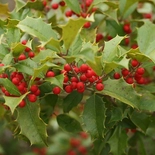
American Holly(Ilex opaca)

Aquatic Milkweed(Asclepias perennis)

Bird Pepper(Capsicum annuum)
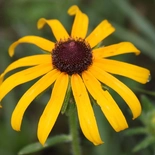
Black-Eyed Susan(Rudbeckia hirta)

Blue Mistflower(Conoclinium coelestinum)

Buckeye(Aesculus pavia)

Bursting Heart(Euonymus americanus)
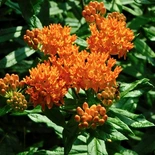
Butterfly Weed(Asclepias tuberosa)
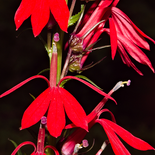
Cardinal Flower(Lobelia cardinalis)

Clustered Bushmint(Hyptis alata)

Copper Iris(Iris fulva)
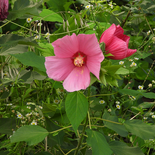
Crimson Eye Mallow(Hibiscus moscheutos)
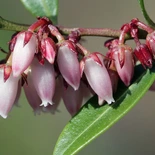
Fetterbush(Lyonia lucida)

Florida Anise(Illicium floridanum)
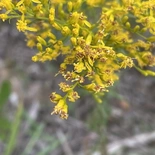
Fragrant Goldenrod(Solidago odora)

Gayfeather(Liatris pycnostachya)

Giant Blue Iris(Iris giganticaerulea)
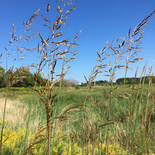
Indian Grass(Sorghastrum nutans)
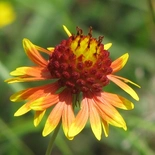
Lanceleaf Blanketflower(Gaillardia aestivalis)

Lanceleaf Coreopsis(Coreopsis lanceolata)
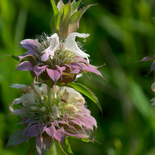
Lemon Beebalm(Monarda citriodora)

Mexican Plum(Prunus mexicana)
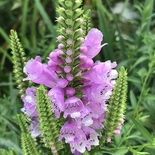
Obedient Plant(Physostegia virginiana)
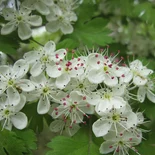
Parsley Hawthorn(Crataegus marshallii)

Purple Coneflower(Echinacea purpurea)

Rattlesnake Master(Eryngium yuccifolium)
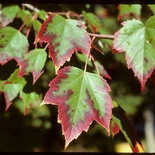
Red Maple(Acer rubrum)

Saltmarsh Mallow(Kosteletzkya pentacarpos)
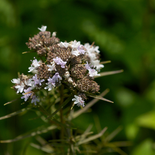
Slender Mountain Mint(Pycnanthemum tenuifolium)

Spring Spider Lily(Hymenocallis liriosme)

Swamp Lily(Crinum americanum)
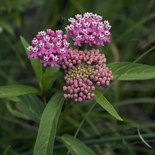
Swamp Milkweed(Asclepias incarnata)

Swamp Sunflower(Helianthus angustifolius)

Sweetbay Magnolia(Magnolia virginiana)
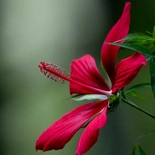
Texas Star Hibiscus(Hibiscus coccineus)
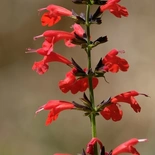
Tropical Sage(Salvia coccinea)

White Wild Indigo(Baptisia alba)

Winecup(Callirhoe papaver)
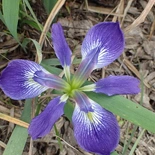
Zigzag Iris(Iris brevicaulis)
ABOUT THE DESIGNER

Dona Weifenbach is a lifelong naturalist and active promoter of native plants. She graduated from University of Southwestern Louisiana in Lafayette with a B.S. in Horticulture and accepted a job landscaping for a developer of subdivisions, providing a basic landscape for each house. On a meager budget of $75.00 wholesale in 1980(!), she provided new homeowners with a native shade tree, a small ornamental tree, several shrubs and ground covers. The next year she started Sunset Landscaping, continuing to promote native plants until 1991. After earning a M.S. in Biology with a focus on wetland loss, she worked in coastal restoration for the next 20 years. She worked with a team to develop the Coastwide Reference Monitoring System (CRMS) and later became manager of the program for the state. The program consists of 392 monitoring sites across the Louisiana coastal zone collecting data to measure the success of wetland restoration projects while confounding natural events such as tropical storms and hurricanes, sea level rise and man-induced events such as oil spills, development, and navigation channel alterations diminish the coastal landscape. Today, she is a member of the Cajun Prairie Preservation Society, Louisiana Native Plant Society, and recently stepped down as president of Acadiana Native Plant Project (ANPP). With ANPP she, helps propagate hard to find native plants, designs native gardens and edits the monthly newsletter. At home she is restoring 4 ½ acres of fallow pasture to Cajun prairie, using locally grown plants and seeds and fire.
About Wild Ones
Wild Ones (a 501(c)(3) nonprofit organization) is a knowledgeable, hands-on, and supportive community focused on native plants and the ecosystem that depends on them. We provide resources and online learning opportunities with respected experts like Wild Ones Honorary Directors Doug Tallamy, Neil Diboll, and Larry Weaner, publishing an award-winning journal, and awarding Lorrie Otto Seeds for Education Program grants to engage youth in caring for native gardens.
Wild Ones depends on membership dues, donations and gifts from individuals like you to carry out our mission of connecting people and native plants for a healthy planet.
Looking for more native gardening inspiration? Take a peek at what our members are growing!

